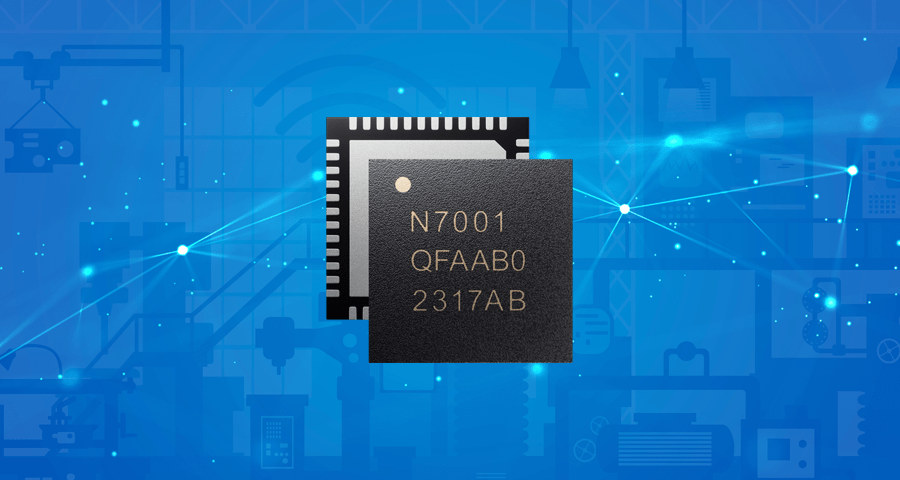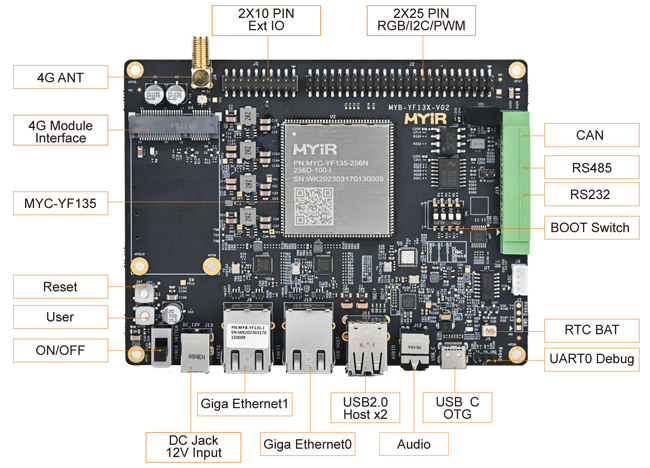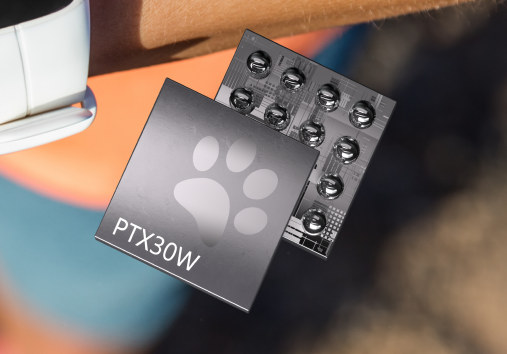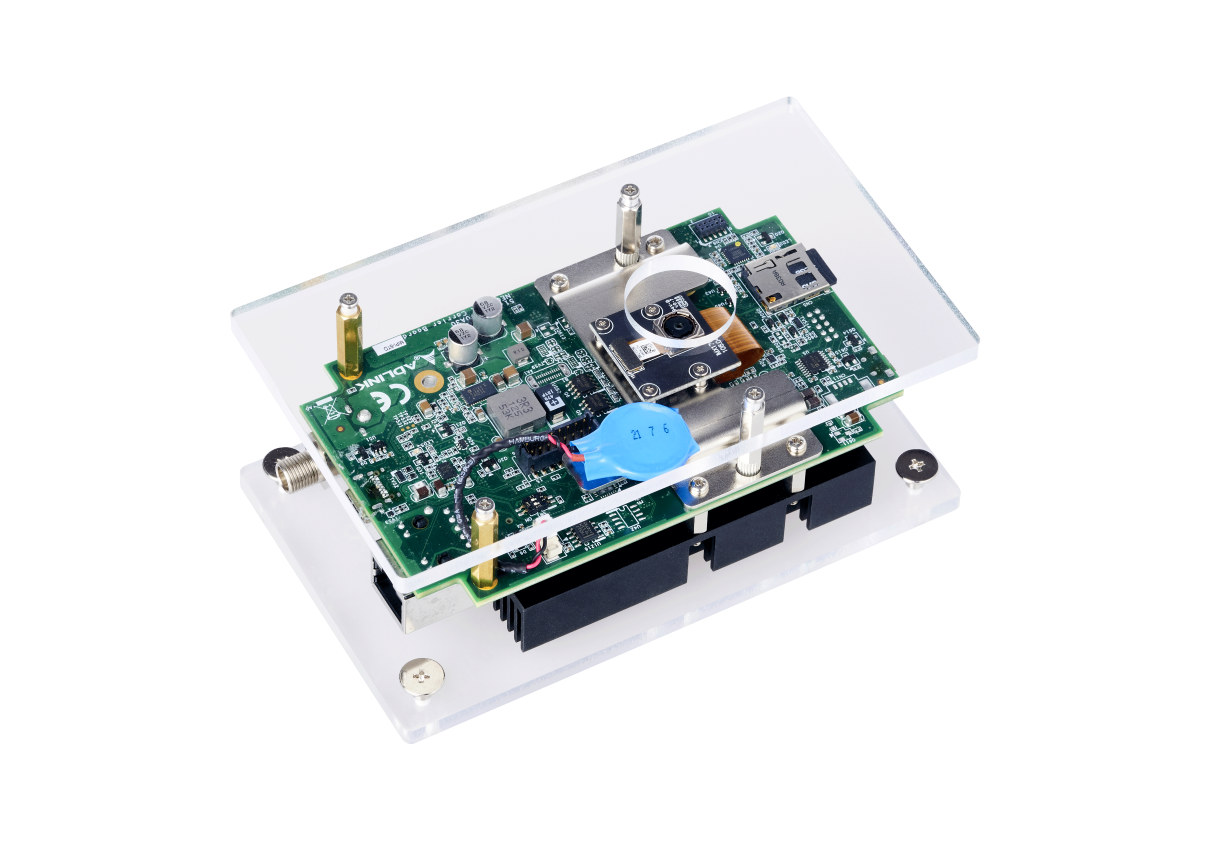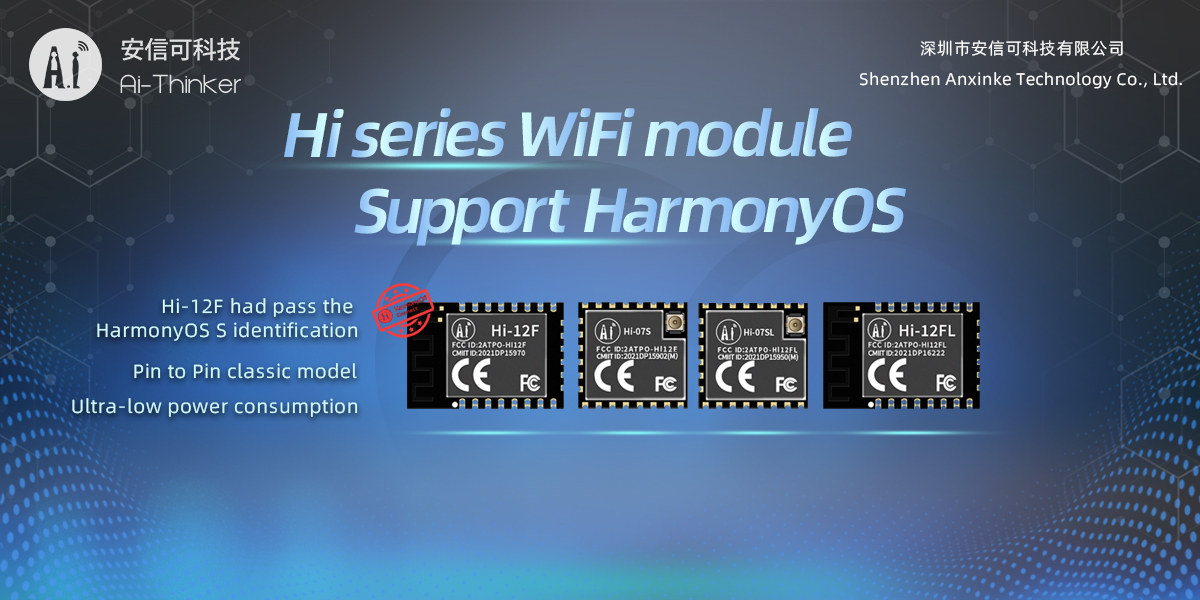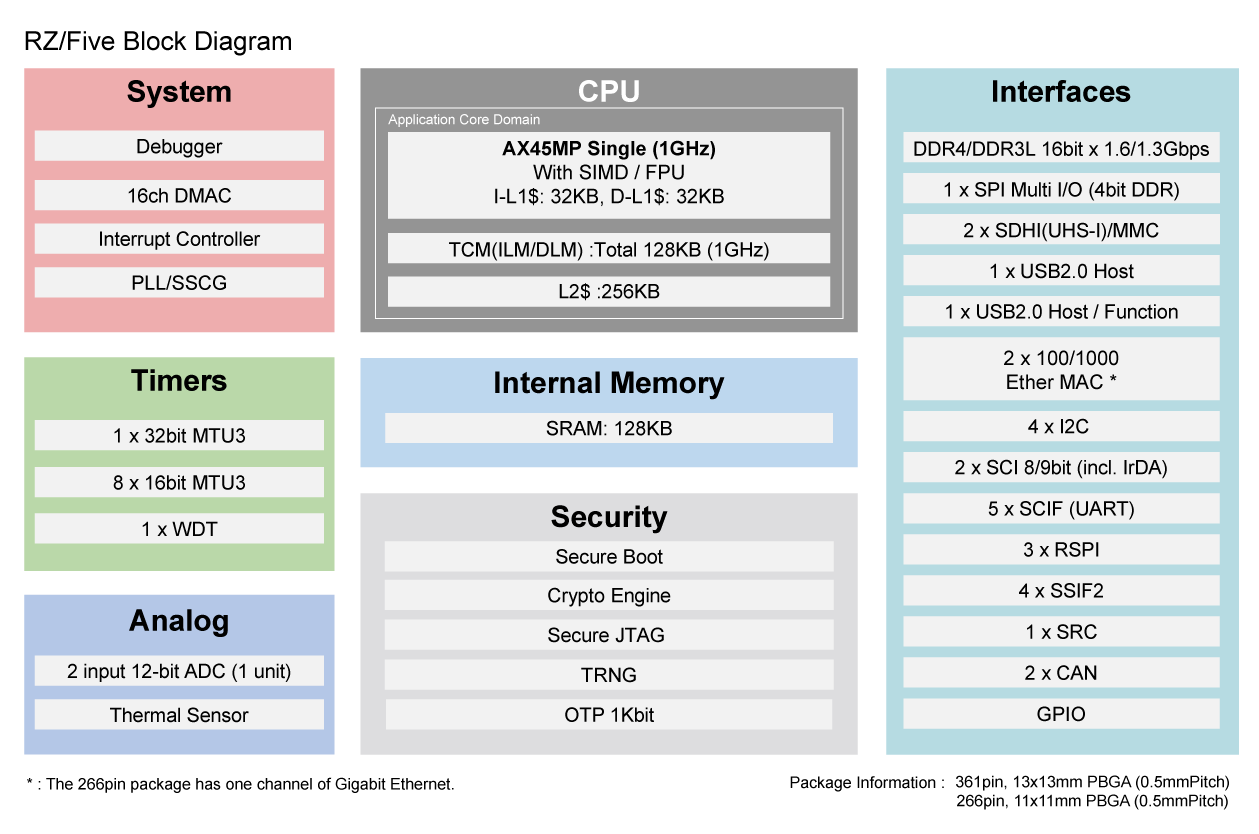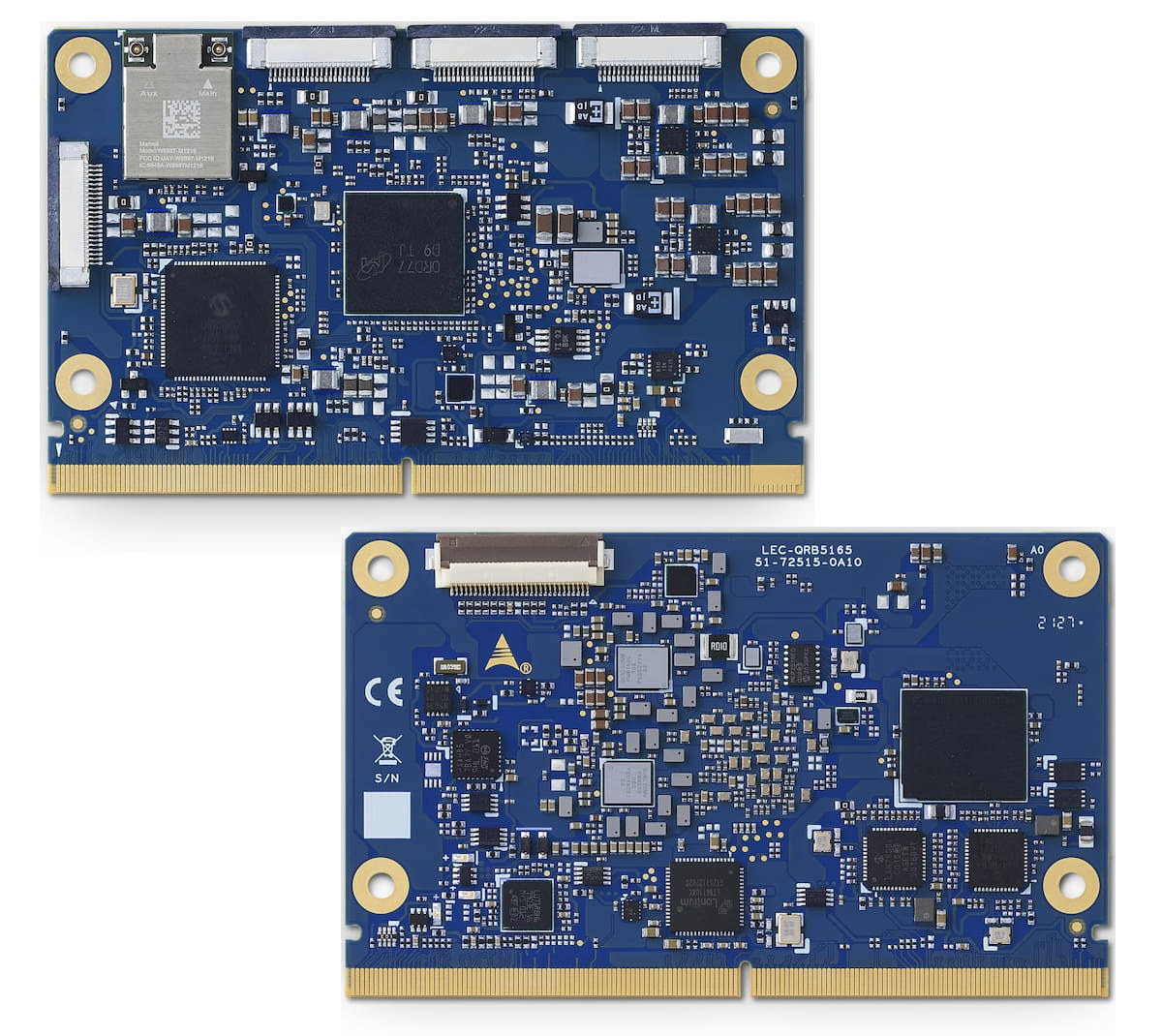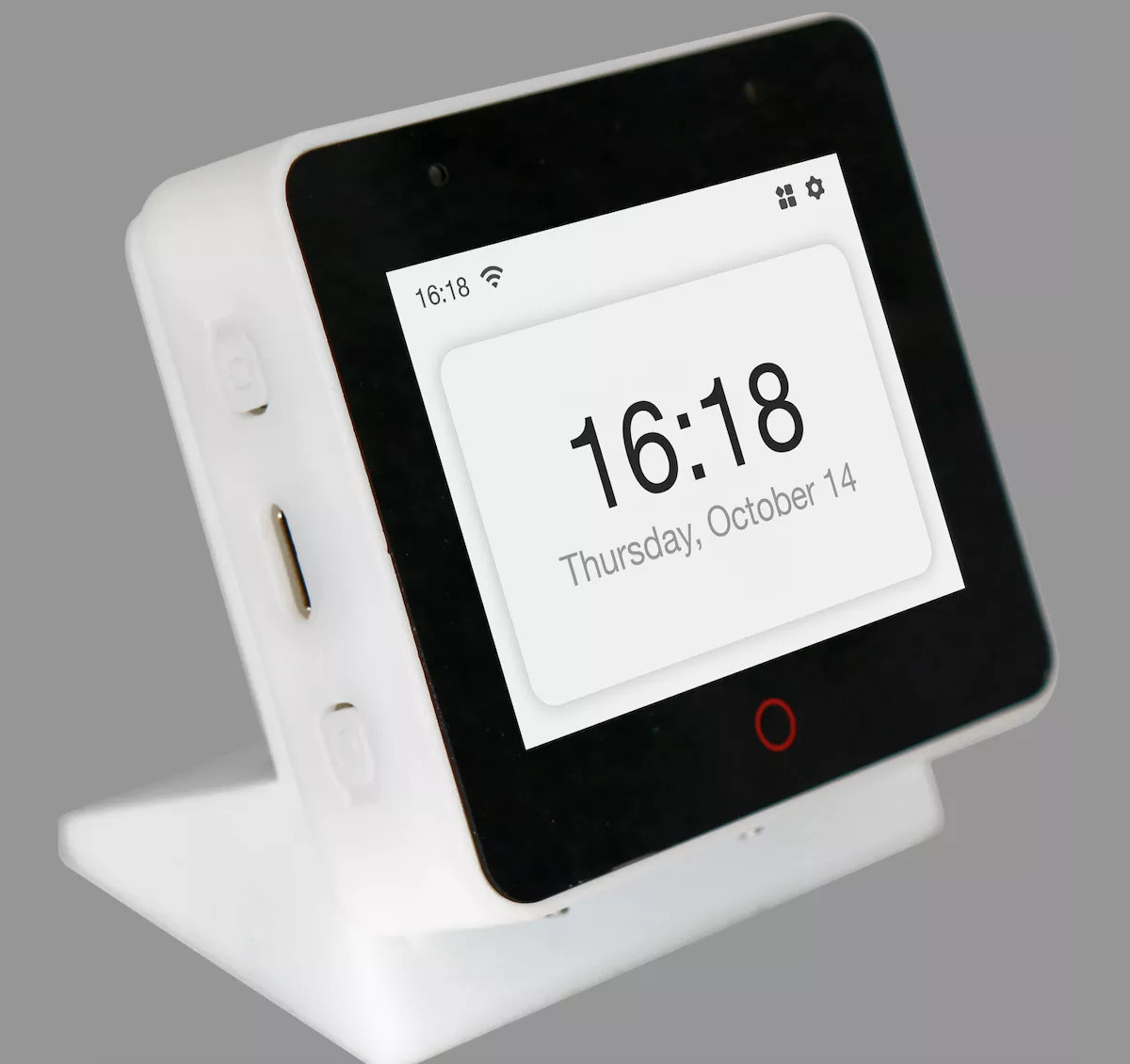Nordic Semi nRF7001 is the second nRF70 Series WiFi 6 companion IC. It is designed to add 2.4 GHz WiFi 6 connectivity to Nordic Semi nRF52 and nRF53 wireless SoCs and nRF91 cellular IoT system-in-package and support both client and access point mode. The nRF7001 follows the introduction of the nRF7002 dual-band (2.4GHz/5GHz) WiFi 6 companion IC last year, and target power or cost-optimized use cases where 5 GHz WiFi 6 may not be required or even suitable. Nordic Semi nRF7001 key features specifications: Complies with 802.11a/b/g/n/ac/ax 2.4 GHz band Wi-Fi 6 Station (STA) 1x Spatial Stream (SS) 20 MHz channel bandwidth 64 QAM (MCS7), 86 Mbps PHY throughput OFDMA (Downlink and Uplink) BSS coloring Co-existence interfaces, including Bluetooth LE Low-power and secure Wi-Fi for the IoT Target Wake Time (TWT) Security – WPA3 Host interface – SPI / QSPI Package – 6×6 mm QFN Since the nRF7001 is based […]
Tiny STM32MP135 system-on-module comes with up to 512MB RAM, 256MB NAND flash or 4GB eMMC flash
MYiR Technology’s MYC-YF13X is a system-on-module powered by the latest STMicro STM32MP135 cost-optimized Cortex-A7 microprocessor with 256MB or 512MB DDR3L, 256MB NAND Flash or 4GB eMMC flash, and 32Kbit EEPROM. The new MYC-YF13X has the same 39x37mm stamp-size form factor as the company’s earlier MYC-YA15XC-T CPU module based on the STM32MP15 Cortex-A7 processor, and a development board is also provided with LCD and camera interfaces, dual Gigabit Ethernet, RS485/RS232/CAN bus interfaces, and more. MYC-YF13X specifications: SoC – STMicro STM32MP135 (STM32MP135DAF7) single-core Cortex-A7 processor up to @ 1 GHz Two configurations for memory and storage 256MB DDR3L, 256MB NAND Flash, 32KB EEPROM or 512MB DDR3L, 4GB eMMC Flash, 32KB EEPROM 148-pin stamp hole expansion interface (1.0mm pitch) Display I/F – RGB Interface Camera – Parallel camera Audio – 4x I2S, 2x SAI Networking – 2x RGMII interface USB – 2x USB 2.0 Up to 8x UART Up to 5x I2C Up […]
Panthronics PTX30W is a 1W NFC wireless charging listener IC
Panthronics PTX30W is an NFC wireless charging listener chip that can receive up to 1W as per the NFC Wireless Charging (WLC) specification unveiled in 2020 and integrates a power management unit and a Li-Ion battery charger. Offered in a compact 3.2mm2 (1.78 x 1.78 mm) WL-CSP package, the PTX30W will enable small battery-powered products, such as smartwatches and other wearables, to be charged over NFC. The chip can operate in standalone mode or connected to a host microcontroller, and the company claims it is around four times smaller than existing designs based on multiple discrete components. PTX30W features and specifications: Integrated NFC Wireless Charging Listener device Efficient Active Rectifier RF interface according to Forum Type 2 Tag Li-Ion battery charger with charging current from 5mA to 250mA MCU LDO with 1.8V or 3.3V output, up to 50mA Embedded power negotiation logic High-efficiency NFC wireless charging listener IC with up […]
NVIDIA Jetson Nano based AI camera devkit enables rapid computer vision prototyping
ADLINK “AI Camera Dev Kit” is a pocket-sized NVIDIA Jetson Nano devkit with an 8MP image sensor, industrial digital inputs & outputs, and designed for rapid AI vision prototyping. The kit also features a Gigabit Ethernet port, a USB-C port for power, data, and video output up to 1080p30, a microSD card with Linux (Ubuntu 18.04), and a micro USB port to flash the firmware. As we’ll see further below it also comes with drivers and software to quickly get started with AI-accelerated computer vision applications. AI Camera Dev Kit specifications: System-on-Module – NVIDIA Jetson Nano with CPU – Quad-core Arm Cortex-A57 processor GPU – NVIDIA Maxwell architecture with 128 NVIDIA cores System Memory – 4 GB 64-bit LPDDR4 Storage – 16 GB eMMC Storage – MicroSD card socket ADLINK NEON-series camera module Sony IMX179 color sensor with rolling shutter Resolution – 8MP (3280 x 2464) Frame Rate (fps) – […]
Ai-Thinker Hi-series WiFi modules support HarmonyOS (Sponsored)
Ai-Thinker Hi-series WiFi modules feature Hisilicon Hi3861/Hi3861L 32-bit RISC-V microcontroller with 2.4GHz 802.11b/g/n WiFi 4 and support for HarmonyOS for IoT projects. The new Hi-12F module even got certification for HarmonyOS “S identification” meaning the Hi-12F module supports HarmonyOS Connect for the Smart Home which used to be called “Works With HUAWEI HiLink” or “Powered by HarmonyOS”. Some of the highlights for Ai-Thinker Hi-series WiFi module include: Integrated high-performance 32-bit RISC-V microprocessor (Hi3861V100/Hi3861LV100) with 352KB SRAM, 288KB ROM, and 2MB Flash IEEE 802.11 b/g/n WiFi 4 up to 72.2Mbps @ HT20 MCS7 with STA and AP modes (Up to 6 clients in AP mode). Baseband and RF circuits with power amplifier PA, low noise amplifier LNA, RF balun, antenna switch, power supply management Multiple Security Capabilities with a built-in eFUSE, support for secure storage, and hardware ID Rich peripheral interfaces with UART, SPI, I2C, GPIO, ADC, PWM, I2S, SDIO, etc… […]
Renesas introduces RZ/Five Linux-capable 64-bit RISC-V microprocessor family
Renesas has launched its first RISC-V processor family with the RZ/Five general-purpose microprocessors based on an Andes AX45MP 64-Bit RISC-V CPU core, and with long-term Linux support via the industrial-grade CIP Linux that offers maintenance for over 10 years. The RISC-V processor is pin-to-pin compatible with the Arm Cortex-A55/M33–based RZ/G2UL processor family, and while being a general-purpose family, the RZ/Five chips are specifically well-suited to IoT endpoint devices such as gateways for solar inverters or home security systems. Renesas RZ/Five key features and specifications: CPU – Single-core 64-bit RISC-V AX45MP core @ up to 1.0 GHz Internal Memory – 128KB SRAM with ECC Memory I/F – 16-bit DDR4-1600 or DDR3L-1333 memory interfaces with in-line ECC; up to 4GB RAM Storage I/F – 2x SD/eMMC interfaces, SPI flash interface Networking – 2x Gigabit Ethernet MAC USB – 2x USB 2.0 Audio – 4-channel serial sound interface (SSI) Serial – 2x CAN/CAN-FD […]
ADLINK LEC-RB5 – A Qualcomm QRB5165 SMARC module designed for drones and robots
ADLINK Technology LEC-RB5 is a SMARC compliant system-on-module powered by the Qualcomm QRB5165 octa-core Cortex-A77 class processor which we’ve already seen in Qualcomm Flight RB5 high-end drone reference design and Lantronix Open-Q 5165RB system-on-module designed for robotics applications. The LEC-RB5 SMARC module ships with up to 8GB PoP LPDDR4 memory, 256GB UFS storage, provides on-device artificial intelligence capabilities (up to 15 TOPS), support for up to 6 cameras, and low power consumption. The main target applications are high-end robots and drones in the consumer, enterprise, defense, industrial, and logistics sectors. LEC-RB5 SMARC SoM specifications: SoC – Qualcomm QRB5165 octa-core Kryo 585 processor with a Kryo Gold Prime @ 2.84 GHz, 3x 3 Kryo Gold @ 2.42 GHz, 4x Kryo Silver @ 1.81 GHz, Adreno 650 GPU @ up to 587 MHz, Video decode HW acceleration for H.265/HEVC, H.264, MPEG2, MVC, VC-1, WMV9, JPEG/MJPEG, VP8, VP9, video encode HW acceleration for […]
Espressif introduces ESP32-S3-BOX AI development kit for online and offline voice applications
Espressif Systems has very recently introduced the ESP32-S3-BOX AI voice devkit designed for the development of applications with offline and online voice assistants, and whose design I find similar to the M5Stack Core2 devkit, but the applications will be different. The ESP32-S3-BOX features the latest ESP32-S3 processor with WiFi and BLE connectivity, AI capabilities, as well as a 2.4-inch capacitive touchscreen display, a 2-mic microphone array, a speaker, and I/O connectors with everything housed in a plastic enclosure with a stand. ESP32-S3-BOX specifications: WiSoC – ESP32-S3 dual-core Tensilica LX7 up to 240 MHz with Wi-Fi & Bluetooth 5, AI instructions, 512KB SRAM Memory and Storage – 8MB octal PSRAM and 16MB QSPI flash Display – 2.4-inch capacitive touchscreen display with 320×240 resolution Audio – Dual microphone, speaker USB – 1x USB Type-C port for power and debugging (JTAG/serial) Expansion – 2x Pmod-compatible headers for up to 16x GPIOs Misc Power […]


